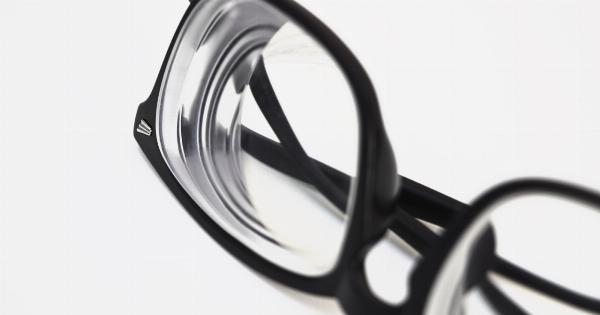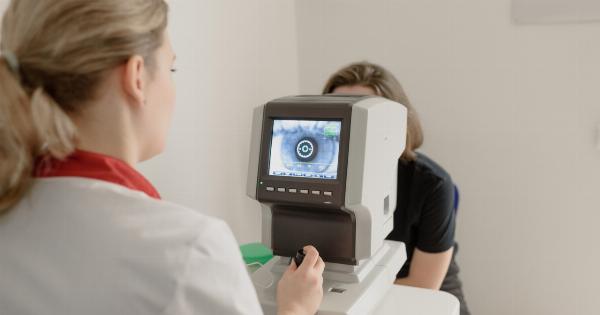Myopia, commonly known as nearsightedness, is a refractive error that affects the ability to see objects clearly at a distance. It is a growing concern, especially among children, with rates of myopia increasing at an alarming pace in recent years.
Fortunately, advancements in technology have led to the development of multifocal contact lenses, a breakthrough solution that can effectively manage myopia in children.
Understanding Myopia in Children
Myopia typically develops during childhood and progresses rapidly during the school years. It is estimated that nearly 30% of the global population is affected by myopia, and this number is expected to reach 50% by 2050.
The condition is characterized by elongation of the eyeball, causing light to focus in front of the retina instead of directly on it. As a result, distant objects appear blurry, while close-up objects are seen clearly.
Myopia can have severe consequences if left unmanaged. High levels of myopia can increase the risk of developing sight-threatening conditions such as retinal detachment, glaucoma, and myopic macular degeneration later in life.
It can also impact a child’s performance in school and their overall quality of life.
The Rise of Myopia: Environmental Factors
The rapid increase in myopia rates over the past few decades has led researchers to investigate the potential environmental factors contributing to its progression. Some of the factors identified include:.
1. Increased Near Work:
The modern lifestyle, dominated by screen time and close-up activities, has resulted in children spending less time outdoors and engaging in activities that require short-range focus for extended periods.
This constant near work can lead to the development and progression of myopia.
2. Lack of Outdoor Time:
Studies have shown that spending time outdoors, especially in natural light, helps reduce the risk of myopia development or slow down its progression.
Lack of outdoor time, particularly in urban areas, has become a contributing factor to the rise of myopia in children.
3. Genetic Predisposition:
Myopia has a genetic component, with children having myopic parents more likely to develop myopia. However, environmental factors play a significant role in determining the degree of myopia a child may develop.
The Role of Multifocal Contact Lenses
Traditionally, myopia has been corrected using glasses or standard contact lenses. While these options provide clear vision, they do not address the underlying causes of myopia progression.
Thanks to advancements in technology, multifocal contact lenses have emerged as a promising solution for managing myopia in children.
These lenses contain different lens powers in different zones, allowing for simultaneous clear vision at multiple distances.
How do Multifocal Contact Lenses Work?
Multifocal contact lenses work by imposing myopic defocus on the peripheral retina while correcting the central vision. This defocus sends a signal to the eye to slow down the elongation of the eyeball, effectively controlling myopia progression.
By providing clear vision at various distances, multifocal contact lenses help maintain normal visual development and reduce the impact of myopia on a child’s daily activities.
Benefits of Multifocal Contact Lenses for Myopia Control
1. Slowing Myopia Progression: Numerous studies have shown the effectiveness of multifocal contact lenses in slowing down the progression of myopia in children.
These lenses have been proven to reduce the rate of axial elongation, which is closely associated with myopia progression.
2. Clear Vision at All Distances: Multifocal contact lenses provide clear vision at all distances, eliminating the need for children to switch between multiple pairs of glasses or constantly adjust their focus.
3. Improved Self-esteem: Myopia can often negatively impact a child’s self-esteem due to the reliance on glasses. Multifocal contact lenses offer an aesthetic advantage, allowing children to feel more confident and at ease in social situations.
4. Convenience and Flexibility: Contact lenses provide greater freedom and flexibility in physical activities compared to glasses.
Multifocal contact lenses allow children to participate in sports and outdoor activities without the limitations and risks associated with wearing glasses.
Choosing the Right Multifocal Contact Lenses
Not all multifocal contact lenses are created equal. It is essential to consult with an eye care professional to determine the most suitable option for each child’s specific needs.
Factors to consider when choosing multifocal contact lenses for myopia control include:.
1. Lens Design:
The lens design plays a crucial role in providing optimal myopia control. Certain designs have shown better results in reducing myopia progression compared to others. An eye care professional can recommend the most appropriate lens design for a child.
2. Individual Eye Characteristics:
Every child’s eyes are unique, and their visual needs may vary. Factors like corneal shape, pupil size, and tear film stability should be taken into consideration when selecting multifocal contact lenses.
3. Compliance and Comfort:
Children need to wear multifocal contact lenses consistently to achieve the desired myopia control. Ensuring comfort and ease of wear is crucial for compliance.
Regular follow-ups with an eye care professional are essential to monitor comfort and address any issues that may arise.
The Future of Myopia Control
As research on myopia control continues to advance, the future holds even more promising solutions.
Stem cell therapy, orthokeratology, and pharmacological interventions are among the exciting possibilities being explored to prevent or slow down myopia progression.
However, multifocal contact lenses stand as a testament to the breakthrough technology already available for managing myopia in children.
With their proven effectiveness in controlling myopia progression and providing clear vision, these lenses offer hope for a brighter future for children with myopia.






























